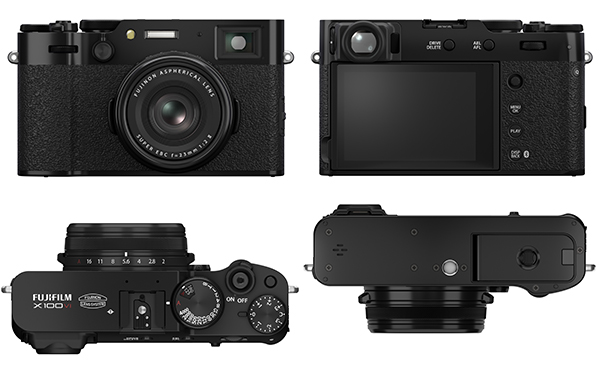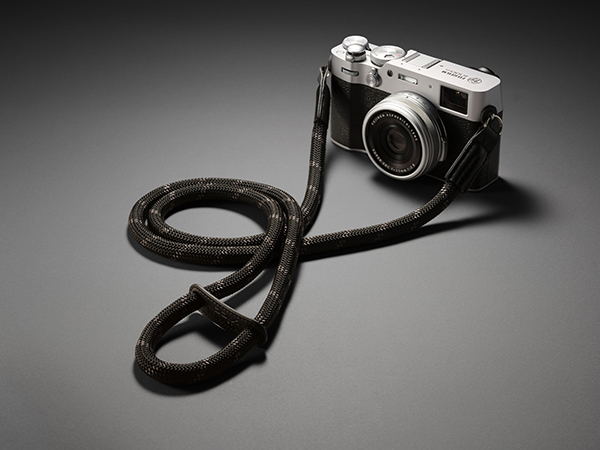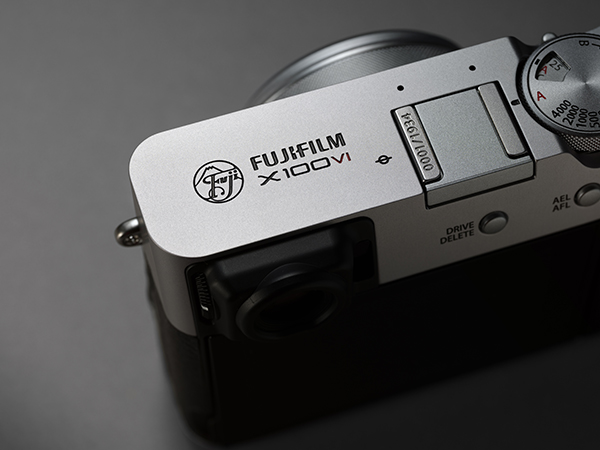Fujifilm Reveals X100VI & Special Limited Edition
Featuring body-integrated image stabilization, a 40.2-megapixel back-illuminated X-Trans CMOS 5 HR sensor, and enhanced video capabilities, the new Fujifilm X100VI will be available in March 2024 at the MSRP of $1599 in black or silver colorways. “X100VI” is pronounced “X100 Six” as it’s the sixth model in Fujifilm’s popular X100 series which debuted at Photokina in 2010.

Fujifilm X100VI Key Features
40.2-megapixel X-Trans sensor with X-Processor 5
Fujinon 23mm f/2.0 II prime (35mm equiv) lens
In-Body Image Stabilization – 5-axis, 6-stop efficacy
Built-in Camera to Cloud integration for Adobe’s Frame.io
20 Film Simulation modes, newly including REALA ACE
Native ISO 125 option (ISO 125-12,800, 64-51,200 extended)
Subject-detection AF X-Processor (still and video)
4-stop internal ND filter
6.2K/30P, 4K/60, 1080/240 video recording
10-bit HEIF stills option
Built-in 1.4X & 2.0X Digital Teleconverter (50mm & 70mm)
Ultra-thin 2-way tilting touchscreen LCD monitor
Water resistant (only with optional adapter & filter)
Compatible with 0.8X and 1.4X conversion lenses
Measures 5.0 x 2.9 x 2.2 inches (128 x 74.8 x 55.3 mm)
Weighs 18.4 ounces (521 g)
Only 1.52 ounces heavier than predecessor (X100V)
 Available in Black or Silver
Available in Black or Silver

Special 90th Anniversary Limited Edition
Many buyers will testify that every model in Fujifilm’s X100 series has been a hard to find, special limited edition. Demand has consistently outstripped supply, it seems, and even secondhand prices at times have been nothing short of crazy. At least this anticipated purchase scramble is more understandable. To celebrate Fujifilm’s 90th anniversary year in 2024, a special Limited Edition of 1,934 X100VI cameras will be available directly from Fujifilm (only). That’s 1,934 units for the worldwide market.

The Limited Edition X100VI is engraved with the 1934 version of Fujifilm’s logo and each unit has a unique serial number, 0001 through 1934, of course. They are packaged with a soft-release button, distinctive strap and Fujifilm history cards. Price is $1999 ($2699 in Canada).
Click here to visit the Fujifilm X100VI Limited Edition website.
Fujifilm invites you to “… contact your local Fujifilm sales and marketing company to explore the opportunity to purchase the item in your area.” Good luck finding one. In fact, if you want to land a regular Fujifilm X100VI, I highly recommend that you place your preorder at the first opportunity. I am.


To find an Authorized Fujifilm Dealer in your area, visit the Fujifilm dealer locator.
FOR MORE INFORMATION visit Fujifilm’s official X100VI website.
∞ Jon Sienkiewicz





